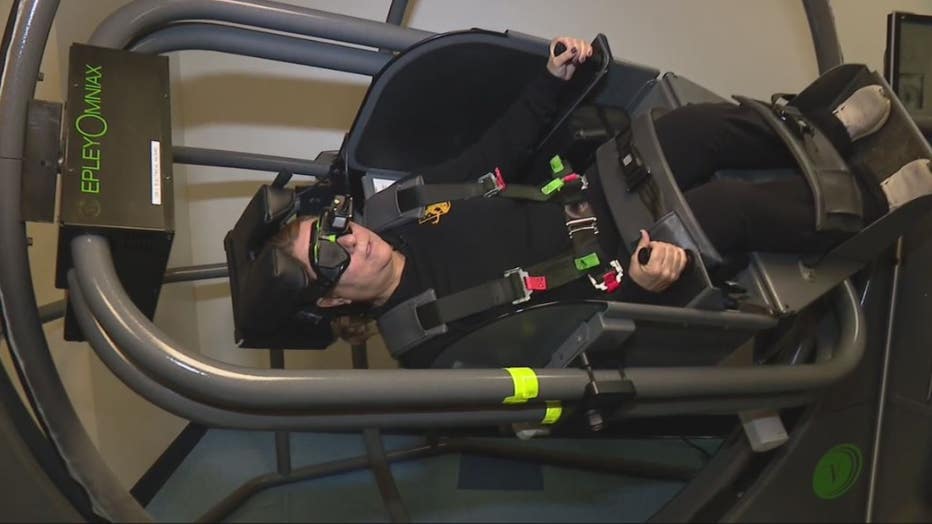Unique chair provides important new vertigo treatment
Unusual chair used to treat vertigo helps communication between brain, inner ear
Vertigo can be be a disturbing feeling and sometimes finding the cause is just as hard as finding treatments. Someone ho has experienced this for years if FOX 2's Jennifer Hammond - and she may have found it in a very unusual chair.
FOX 2 (WJBK) - Vertigo can be a disturbing feeling and sometimes finding the cause is just as hard as finding treatments. Someone who has experienced this for years is FOX 2's Jennifer Hammond - and she may have found it in a very unusual chair.
Jen sits in the chair and is strapped in - then is tipped over onto her side where her vertigo is triggered. But it's a much shorter episode.
Dr. John Zappia explains that vertigo is a miscommunication between your brain and inner ear.
"Completely faulty information is being sent to the brain. Even though there is no actual motion occurring, the brain perceives there is, very deceptive and very disturbing when it occurs," Dr. Zappia said.
Jen said she first experienced in eight years ago in 2015.
"This one morning, I woke up in Arizona, I got out of bed and I literally walked right into the wall and I felt horrible all day long. That was the first time I understood that something was wrong with me and it took me a little while to get it diagnosed," she said.
A year later, she met Dr. Zappia.
"The symptoms she experienced were vertigo brought on by position changes and movement. Once people describe that, it guides us to a particular diagnosis of benign positional vertigo," Dr. Zappia said.
There are several canals in the inner ear that send messages of movement to the brain, when rouge particles get inside those canals, they send the wrong signal.
"Normally the inner ear is filled with fluid. The fluid in the inner ear moves a little each time you move and there are little cells that sense that movement. That's how the whole system works. If there's something extra in there, like these particles, they will bump into the sensing cells and send distorted or abnormal information. That's where the vertigo, or dizziness, comes from," Dr. Zappia said.
As Jen is in the chair, she's lowered more, in an attempt to shake loose those particles.
Certain positions will trigger jumpy eye movement, signaling vertigo, that helps to pinpoint the problem and target those crystals.
"In the chair, we can separate the motion that we're putting them in with the canal that we're stimulating. By doing that, we can identify the particular canal. Once we've identified which canal is active, we can then complete repositioning based on which canal is active," Dr. Zappia said.
Jen is hopeful she will continue to get better.
"I feel dizzy every morning when I sit up in bed. It's a sad way to wake up. I just want one day to wake up and not feel dizzy," she said.
So far, Jen's been through two of these chair sessions. If they don't work, Dr. Zappia said the next option is surgery.

FOX 2's Jennifer Hammond receives a treatment for her vertigo.

